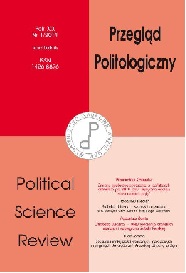Międzynarodowe implikacje Arabskiej Wiosny
International implications of Arab Spring
Author(s): Marcin TarnawskiSubject(s): Politics / Political Sciences
Published by: Uniwersytet Adama Mickiewicza
Keywords: Arab Spring; revolution; implications; Russia; military intervention
Summary/Abstract: Revolutions in the Arab world sparked strong worldwide interest, mainly due to the ease with which long-reigning dictators were renouncing their power (except Syria). However, the shift of power has not PP 1 ’14 Międzynarodowe implikacje Arabskiej Wiosny 31 made those who led to the overthrow of the tyrants any better off. As the price of freedom seems incalculable, it is difficult to assess unequivocally all the costs of the so-called Arab revolutions: the number of people killed and displaced, changes to the sizes of economies and standards of living, the impact on the immediate neighbors and on the situation in the region. Approximately 50,000 people died in total in the four most violent uprisings in Libya, Egypt, Yemen and Syria (where the uprising continues). In the 2012 edition of the annual Failed States Index issued by Foreign Policy, it was Libya and Syria where the most notable drops were observed (ranking 50th and 23rd respectively) with Yemen „moving up the scale” and being rated 8th in the world. One of the main issues touched upon in the Failed States Index 2012 was the Arab Spring in particular, but the picture painted by its authors turned out to be quite pessimistic and its title: Was the Arab Spring Worth It? does not leave much room for misinterpretation.
Journal: Przegląd Politologiczny
- Issue Year: 2014
- Issue No: 1
- Page Range: 19-32
- Page Count: 13
- Language: Polish

